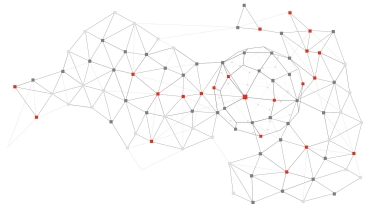
Bounceback play for SMEs
They say there’s no going back to the normal as we know it. And that until a cure is found and made available, we will be bouncing in and out of quarantine, in one form or another. And if doing business is difficult during normal times, imagine the chaos that the “new normal” brings, especially for small and medium enterprises (SMEs).
They say too, that there’s no playbook for this. True. But it doesn’t mean that SMEs cannot and should not begin to write one. And the best play out there is to work in teams. From the bench where I sit, SMEs should form and work with three teams:
1. Resiliency team. This is your crisis team‒the frontliners of your business. This team will put in place protocols to ensure the safety and well-being of the organization, from the owner down to the last employee: from distribution of relief packages, financial and otherwise, to all members of the organization, to formulating social distancing guidelines and crafting of back-to-work policies. Special concern for this team is to make sure that the captain (the owner) is physically, mentally and emotionally healthy.
2. “Reimagine” team. Set aside your five-year and ten-year strategic plans. Those are hardly relatable now because those were prepared on a business as usual scenario. And there’s nothing usual about this pandemic and its aftermath. This team will have to reimagine the purpose and vision of the organization within shorter timeframes. One year instead of ten. 100 days instead of five years. 30 days instead of 365, until such time that optimum level of operations is achieved. The Reimagine team will also be tasked to explore new investment opportunities and study new markets. In other words, pivot the organization for business unusual.
Take the case of an entrepreneur running a chain of buffet restaurants in greater Metro Manila. With the Enhanced Community Quarantine (ECQ), all of her 15 outlets were shut down: no revenues, no cash inflow. She decided to retain all her employees, which added to the financial burden. She convened her managers and pushed everyone to keep cooking and use all perishables in their inventory for meal packs to be donated to frontliners. They then reached out to well-meaning organizations and now they are supplying lunch and dinner packs to almost all major healthcare facilities in Metro Manila. Initially, it was never close to breaking even. But at least it covered all her variable costs and she was able pay the salaries of her employees. With more institutions booking orders, she’s now back in the black! She has since created a new line of deli and frozen food products available online and distributed in major supermarkets Luzon-wide.
3. Repurpose team. The main objective of this team is to take stock of assets and realign and redeploy as efficiently as possible. An idle asset is not an asset and most of the time, turns into a liability. Storage, maintenance and reconditioning costs can build up over time if assets are not efficiently deployed.
One success story is a family business that runs boutique hotels in the Ortigas, BGC and Makati Central Business districts. Following the ECQ, all bookings were cancelled and refunds had to be given. With profound revenue loss, the family had to dip into their personal savings to be able to pay their employees during the early days of the ECQ. When the ECQ was extended, the owners saw an opportunity to tie up with BPOs by providing housing for its agents who are required to report onsite. They repurposed their hotel rooms into dormitories and turned their service cars into shuttle service. While occupancy rate is still lower than ideal, the family is just happy that their lights continue to be turned on, their employees paid in full, and their assets efficiently deployed.
Entrepreneurs have the natural inclination to fight back, seeing what they have built over the years being threatened by the pandemic. They are resilient as they are creative. This crisis gives them the chance to again bring to fore their startup mentality. And as they look to restart, here are some areas that they can consider:
Tech as an ally
Technology is no longer just a support function. It has become a strategic capability and a great equalizer. For years, many SMEs have procrastinated on their digital transformation. In a recent webinar hosted by the Department of Trade and Industry, they showed that a good 65% of SMEs don’t even have websites! Now is the perfect time to push your digital journey into hyperdrive.
- Jump into the e-commerce bandwagon. For SMEs who don’t have the capacity to manage their own platform, you can explore Lazada or Shopee‒ two of the biggest e-commerce platforms in the country. These will help you expand your reach and influence, without building brick-and-mortar outlets.
- Fintech is another area that SMEs can take advantage of‒from digital wallets, online and mobile payments to securing business financing. Gcash and Paymaya, for instance, offer tools and support to enable a cashless and contactless business-to-customer transactions‒especially handy in these times of mandated social distancing.
Go hyperlocal
At least in the near term, the mall concept and large physical marketplace are going to be shaky. Especially for SMEs who are into foodservice, the trend will shift into smaller circles and hyperlocals. Think food trucks, drive thrus and takeout counters instead of the full-blown dining experience. Community markets, social media market groups and food deliveries, instead of the elaborate foodservice, have spread. Operations will have to be reconfigured, assets repurposed and manpower upskilled.
Form CX to UX
Compared to the Big Boys, one of the unique advantages of an SME is the owner’s proximity to the customer. They generally understand their customers better and in turn offer a more pleasant customer experience‒a more personal touch, if you will. As SMEs move towards e-commerce and online presence, it takes away that advantage. Another challenge therefore is to transition that pleasant customer experience (CX) into a pleasant user experience (UX). Taking that intimate understanding of customers from the moment they begin considering a purchase, all the way to buying and paying for the product or service, the online process and virtual experience should be as efficient and seamless as possible.
This crisis has brought along with it significant challenges, some of which we are experiencing for the first time. But it also brought opportunities. One among many is the opportunity to reboot and start anew. It brought clarity into the minds of entrepreneurs on what is truly important: a flashback to the original vision when they first started their ventures, for profit or otherwise. True, the crisis may have shaken the entire economy, but it will never shake the resolve and ingenuity of the Filipino Entrepreneur.
Contact us















